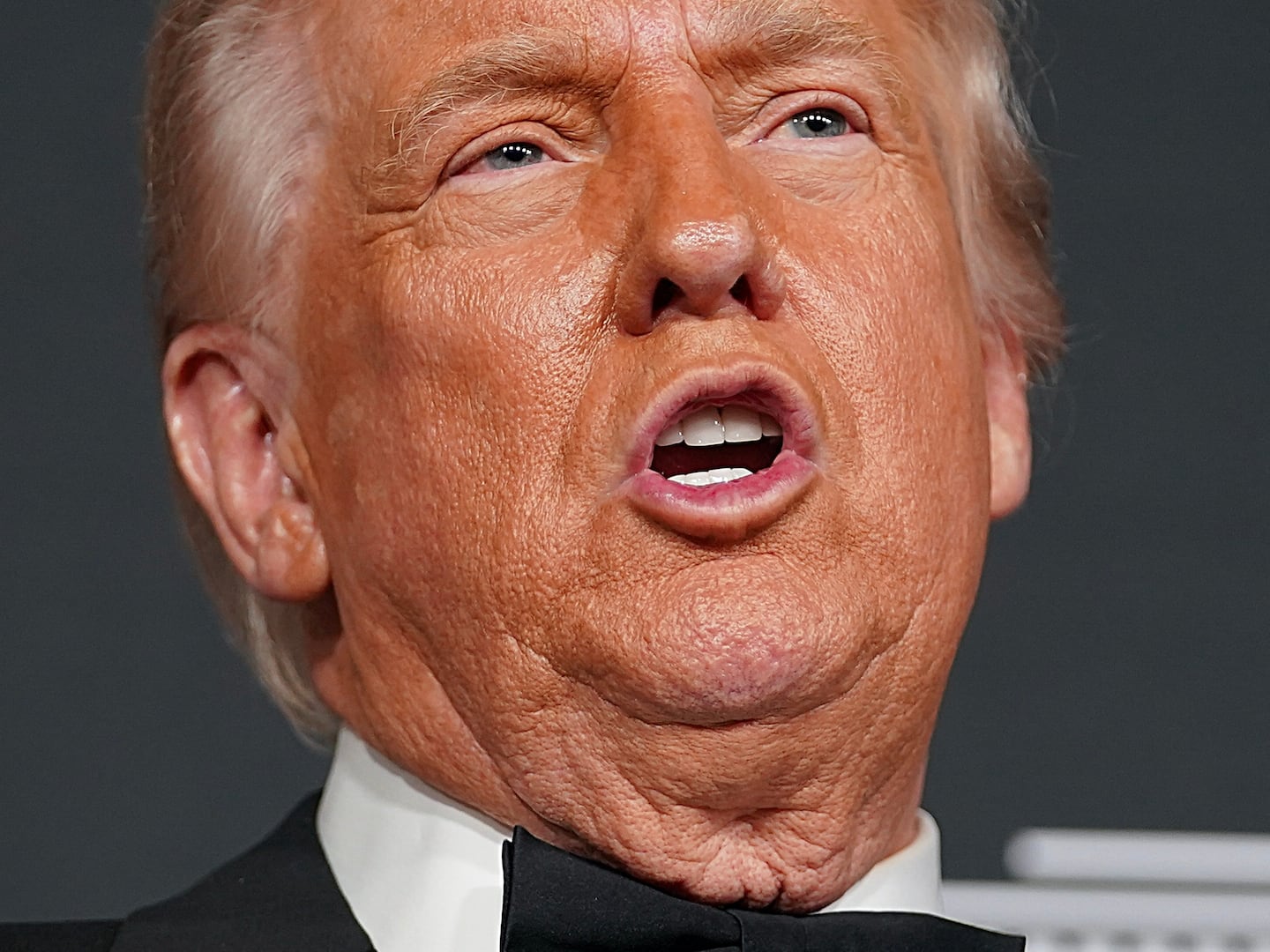For 21 years, death row inmate Willie Jerome Manning has waited for a DNA test to prove his innocence. In 1994, he was convicted in the murder of two white Mississippi State University students, who were kidnapped outside a frat house and later found shot in the head.
Manning was a black man facing an all-white Southern jury, and the cards were already stacked against him. The prosecutor’s case relied on testimony from a jailhouse snitch and a woman who wanted to see her own criminal charges disappear—and an FBI expert who said a hair sample linked Manning to the crime. Manning was convicted and sentenced to death.
But on May 7, 2013, he got an 11th-hour stay of his execution. The reprieve came days after the Department of Justice delivered letters calling the Federal Bureau of Investigation's microscopic hair comparison analysis flawed.
“We have determined that the microscopic hair comparison analysis ... included statements that exceeded the limits of science and was, therefore, invalid,” read one DOJ letter to Oktibbeha County District Attorney Deforest Allgood.
While there wasn't a positive match, the FBI expert “stated or implied ... that a questioned hair could be associated with a specific individual to the exclusion of all others.”
Rob Mink, an attorney for Manning, told The Daily Beast that the FBI’s hair analysis was drilled into jurors during closing arguments. “The hair testimony was emphasized repeatedly by the prosecutor who tried the case,” said Mink, a trial attorney in Jackson, Mississippi. The DA echoed the FBI’s claim that the sample likely belonged to a black man.
“We should all be very concerned and frightened that this sort of thing can happen,” Mink added. “A person can be convicted and sentenced to death, and science later shows the conviction is invalid and not reliable.”
Manning’s case is only one among thousands from the 1980s and ’90s that used the FBI’s pseudoscientific analysis—which may have resulted in death sentences or decades-long imprisonment for innocent people.
Microscopic hair comparison is not a DNA test. Rather, follicles are put under a microscope and inspected against hair samples of parties involved in a crime. In 2009, the National Academy of Science called it “highly unreliable.”
To date, 74 of the country’s 329 wrongful convictions overturned by DNA evidence involved the hair analysis, according to the Innocence Project.
On Monday, the DOJ and FBI acknowledged that its experts provided faulty and exaggerated testimony favoring the prosecution for two decades—a scandal that’s propelled the largest post-conviction review in the country.
As early as 1984, the FBI acknowledged that microscopic hair comparison couldn’t positively determine whether hair belongs to a certain individual. The admission, however, didn’t stop its experts from using it.
Now the feds are slated to review thousands of cases where FBI experts submitted reports or testified in trials using the method. An ongoing review is being conducted in tandem with the Innocence Project and National Association of Criminal Defense Lawyers and so far, it is shocking:
· All but two of 28 FBI examiners testifying in 41 states provided testimony or lab reports that contained erroneous statements.
· Of the 268 cases where FBI analysts provided testimony, 96 percent contained erroneous statements.
· In 35 cases where defendants received the death penalty, 33 contained errors. Nine of the defendants have been executed, while five more died in prison.
These figures only represent cases involving the FBI’s reports. There’s no telling how many state experts—including those who received training from FBI examiners—are still using the dubious method or how it has influenced their cases.
“The [FBI] examiners gave false and misleading testimony ... but what’s worse, they released a virus from the FBI’s hair unit to the criminal justice system,” Chris Fabricant, director of strategic litigation at the Innocence Project, told The Daily Beast.
“There are only two conclusions that can be drawn from this,” he added. “There was massive scientific illiteracy at the FBI crime lab for multiple decades, or this was done deliberately. There’s plenty of evidence of both, really.”
State courts are following the FBI’s lead
Some cases put people behind bars for decades—even when the evidence was hanging by a single hair. George Perrot has spent 30 years in prison for rape because an FBI examiner convinced a jury that a strand of hair belonged to him, his attorneys charge.
In 1984 and ’85, authorities in Springfield, Massachusetts, grappled with a series of rapes targeting elderly women. Perrot was only 17 years old when he was put on trial for the rape and robbery of one 78-year-old—who repeatedly told police and prosecutors he looked nothing like her attacker.
There was no blood or semen or other materials to test for evidence, but Perrot was put away for life. His attorneys are requesting a new trial.
For Claude Jones, a DNA test came too late. In 1989, Jones was convicted in the killing of a liquor-store owner during a robbery in Texas. His two conspirators testified against him, but under Texas law, accomplice testimony isn’t enough to seal a conviction. State experts presented the hair, which they said likely belonged to Jones.
Before his 2000 execution, Jones asked then-Governor George W. Bush for a stay of execution and to conduct a DNA test. Bush refused. The Innocence Project later learned, through an open records request, that Bush’s staff didn’t include the DNA testing possibility in their memos to him. A decade later, testing finally proved that the hair—the only physical evidence in the case—never belonged to Jones.
In Oklahoma alone, between 1998 and 2012, eight people whose cases involved hair evidence were exonerated. Three were on death row, according to a recently published paper co-authored by Fabricant.
Still, courts nationwide continue to accept hair comparison analysis as evidence—even as scientists call it bunk.
The Florida Supreme Court last summer rejected the appeal of death row inmate James Duckett, an ex-cop convicted for the 1987 sexual battery and murder of an 11-year-old girl. The court said Duckett never objected to now-discredited FBI expert Michael Malone’s testimony at trial, and even pointed to the FBI’s continued usage of the method.
“The field of forensic hair analysis has not been discredited, and the FBI has not discontinued the use of such analysis,” the court wrote in its June 26, 2014, opinion, adding that Malone’s testimony was “well within the bounds of the field.”
Fabricant and the Innocence Project are advocating for national standards in microscopic hair comparison analysis, as well as other pattern-matching disciplines including ballistic evidence, tire tread and shoe print analysis.
“Smaller jurisdictions that don’t have the resources to do DNA testing are under no legal obligation to discontinue the use of this evidence,” Fabricant told The Daily Beast. “There is nothing to preclude them from doing so.”
The case against Willie Manning
As the courts debate, Willie Manning is still in jail, waiting and swearing that he’s innocent, just like he has for 21 years. The university student case isn’t Manning’s only capital conviction—his other murder charge was tossed this week.
Manning had been convicted for the 1993 killing of a 90-year-old woman and her daughter. But in February, the Mississippi Supreme Court granted Manning a new trial, saying the state violated his rights by failing to provide “favorable, material evidence.”
On April 20, Deforest Allgood, the DA who also prosecuted Manning’s student slaying case, announced he was dropping the charges.
The state’s key witness, who testified during trial that he saw Manning enter the victims’ Starkville apartment, recanted his statements in sworn affidavits. It was also revealed that police withheld notes that showed the apartment where the witness claimed to have lived was actually vacant.
“In my mind, the state had written Willie off,” said Tucker Carrington, founding director of the Mississippi Innocence Project and law professor at the University of Mississippi. “‘Who gives a fuck about this guy? He’s already condemned. We know he’s the type of person who’s capable of doing this. It’s him.’”
Carrington is referring to Manning’s previous conviction for the murder of the coeds. Weeks before Manning’s 2013 scheduled execution in that case, the state denied a request for DNA analysis of hair, fingerprints and other untested evidence, meant to prove his innocence.
Manning’s attorneys scrambled to pursue an injunction that would prohibit the state from destroying the evidence, even after he was executed. “We wanted to test the material at our own expense, even posthumously,” Carrington said. “We’re not afraid of the results. The results will stand for themselves, whatever they may be.”
But the injunction wasn’t submitted. After the FBI sent letters admitting its hair analysis errors, the court stayed the execution and later granted a DNA test—though it never cited the feds’ mea culpa.
Manning’s attorneys and supporters are now waiting to see if a Dallas forensic lab can generate DNA profiles from the evidence in the university case.
“Even if the DNA and fingerprint evidence is inconclusive, we’re not finished arguing about whether he’s entitled to a new trial,” Mink said. “The fact that he’s essentially been exonerated from the other two murders should make everyone concerned about the reliability of convictions like this—especially when the convicted person is going to be killed at the behest of the state.”





